 For all of its isolation and distancing, April 2020 will go down in history as a month of global unity. Across almost every town, region and country, virtually all humans have been living one of two primary experiences. The care givers, the essential workers and the indispensable retailers have each faced their own daily mix of mission, horror, exhaustion, and anxiety, as they treat suffering and provide critical services. The rest of us have tried to find the bandwidth to confront altered realities and connect with people in new ways, even as our personal, economic, and social lives have been upended by mayhem, fear, tragedy, and occasionally opportunity. The impacts of COVID-19 have not been fair. They have certainly not been equal. But we humans have had a lot more in common than usual, even as we self-isolate behind masks, doors, and borders.
For all of its isolation and distancing, April 2020 will go down in history as a month of global unity. Across almost every town, region and country, virtually all humans have been living one of two primary experiences. The care givers, the essential workers and the indispensable retailers have each faced their own daily mix of mission, horror, exhaustion, and anxiety, as they treat suffering and provide critical services. The rest of us have tried to find the bandwidth to confront altered realities and connect with people in new ways, even as our personal, economic, and social lives have been upended by mayhem, fear, tragedy, and occasionally opportunity. The impacts of COVID-19 have not been fair. They have certainly not been equal. But we humans have had a lot more in common than usual, even as we self-isolate behind masks, doors, and borders.
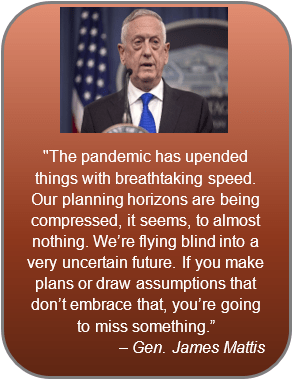 Entering May 2020, our shared experiences are diverging again. Some of us already have access to non-essential workplaces, beaches, restaurant dining, haircuts, and tattoos. Others will have to wait for these privileges, gladly or in protest. Those who think re-entry is happening too fast will continue their self-imposed quarantines, avoiding their reckless neighbors and wagging their fingers if and when deaths re-accelerate. Those who think that governments have been killing the patient to suppress the disease will test the boundaries, challenging the extremes of social distancing, as evidence emerges of momentous economic damage. Our sense of global unity was nice while it lasted.
Entering May 2020, our shared experiences are diverging again. Some of us already have access to non-essential workplaces, beaches, restaurant dining, haircuts, and tattoos. Others will have to wait for these privileges, gladly or in protest. Those who think re-entry is happening too fast will continue their self-imposed quarantines, avoiding their reckless neighbors and wagging their fingers if and when deaths re-accelerate. Those who think that governments have been killing the patient to suppress the disease will test the boundaries, challenging the extremes of social distancing, as evidence emerges of momentous economic damage. Our sense of global unity was nice while it lasted.
A next normal has arrived. It will keep changing, at least until effective vaccines are validated and administered.
Uncertainty. The most predictable ingredient of the next normal, as it lurches toward a new normal, is uncertainty. Health uncertainty will capture the lion’s share of attention, but economic uncertainty will feature prominently as well. In our last COVID blog, we highlighted the macroeconomic, microeconomic, political, and human uncertainties we face in any next normal. Now, on the verge of re-entry, we look at how B2B sales can navigate choppy waters.
In a recent online conversation moderated by McKinsey, General James Mattis, former U.S. Secretary of Defense, and Kevin Sneader, Global Managing Partner at McKinsey, grappled with the leadership implications of COVID-19 uncertainty. Without using the word “agile,” the overarching theme of their conversation is that successful leaders will embrace uncertainty and will prepare to be agile as things change.
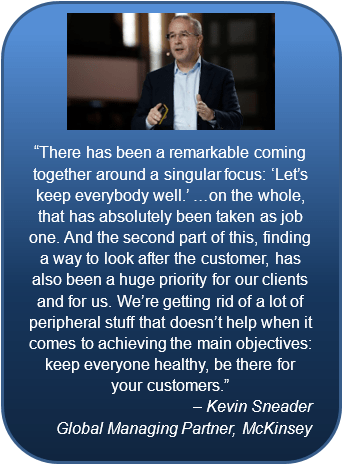 A Break in the Fog. There are three ways they recommend that we embrace uncertainty:
A Break in the Fog. There are three ways they recommend that we embrace uncertainty:
- Focus. Kevin Sneader highlights the simplifying importance of focus. With all the turbulence and all the noise, the best way for business teams to thrive is to center their attention on one or two focal points. Sneader highlights two that are globally relevant: “…keep everyone healthy, be there for your customers.” Simple and clear.
But focus also requires that we ignore our peripheral vision. Extraneous to-dos need to take a back seat. “We’re getting rid of a lot of peripheral stuff.” It is time to de-clutter our thought process, our content, and our messages. “Keep everyone healthy, be there for your customers.” Period.
Each of our focal points needs to have substance. Keeping everyone healthy means a genuine commitment, in the workplace and in customer interactions, to proper precautions, respectful distancing, and to new and improved cleanliness habits. Being there for our B2B customers means focusing on the specific value we deliver to them. And then delivering it. 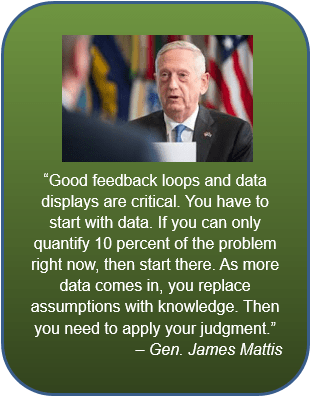 Use the best data you have. Improve it. Just because times are uncertain, that doesn’t mean we should wander around in the fog. “You have to start with data.” General Mattis looks for unbiased information, imperfect though it may be. Even when the data are hard to come by, we need to start somewhere. “If you can only quantify 10 percent of the problem right now, then start there.”
Use the best data you have. Improve it. Just because times are uncertain, that doesn’t mean we should wander around in the fog. “You have to start with data.” General Mattis looks for unbiased information, imperfect though it may be. Even when the data are hard to come by, we need to start somewhere. “If you can only quantify 10 percent of the problem right now, then start there.”
This applies to how we focus on our B2B customers. We need to understand one or two of their problems, quantify them, and find out how much we can diminish them. “As more data comes in, you replace assumptions with knowledge.” If we are there for our customer, more data will come in. We will be able to improve on the data we started with, gradually replacing general value hypotheses with validated Unique Value Propositions.- Prepare. The fog of a pandemic is like the fog of war. General Mattis is crystal clear. “We’re flying blind into a very uncertain future. If you make plans or draw assumptions that don’t embrace that, you’re going to miss something.” This applies to how we, as business leaders, are there for our customers. As we interact with customers, we need to prepare for three types of uncertainty:
- Account uncertainty. Like it or not, we are in a recession. Recessions are never uniform in their initial impacts or their ultimate consequences. As different customers weather the storm in different ways, not only do they make varying adjustments to budgets, personnel and tactical plans, but they also diagnose their own problems and re-orient their strategic priorities in different directions.
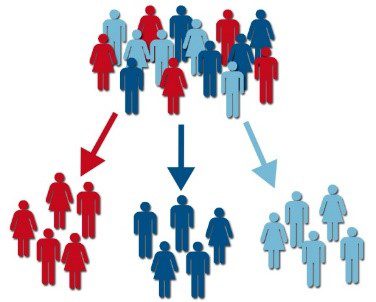
Our customers are not all the same. We need to interact with them individually. If we identify and connect with their specific problems, if we customize our Value Propositions for their specific concerns and their specific data, we will make the transition from being a transactional vendor to being a trusted advisor. Not only will we help them address heightened internal financial scrutiny, but we will also position ourselves to benefit from their growth initiatives as they emerge from constrained circumstances. - Stakeholder uncertainty. Our customers are adjusting real-time to an uncertain landscape, changing their plans on the fly. The buyers our teams usually talk to may or may not be in the know – their jobs may or may not be on the chopping block. Who we need to talk to and how decisions are made, opaque in the best of times, are murkier and changing daily as this pandemic stumbles forward.

We need to speak in a language that new stakeholders and new decision-makers will understand. Even if our original sponsor bought into our product vision, their new approval process may hinge on what we deliver financially. Even if we sold a solution based on its capabilities and technical specifications, the politics of our renewal may pivot on outcome metrics. Building buyer consensus is best accomplished in the face of organizational disruption by translating what we do for our customer into dollars or euros. - Personal uncertainty. As we connect with individual, customer stakeholders, we can’t anticipate what is going on in their lives. They might be distracted. They might be anxious. They might view our precautionary face coverings or lack thereof as inappropriate. They might be technically challenged and unable to connect online. Some or all of them might not be in the room. Their managerial habits of gathering people physically in a meeting to make a decision might have changed.

Engaging customer stakeholder attention individually is not automatic. Keeping stakeholder attention may be both problematic and harder to gauge. What customers will remember from a session is unpredictable. We need to engage them with focused memorable content that keeps individuals participating whether they are online or in the room. Digital, interactive Value Propositions make remote, online meetings engaging by turning one-way content transmission into two-way, interactive collaboration.
Prepare for focused, data-driven, customer-centric engagement. Change and uncertainty will be among the facts of life for the foreseeable horizon. To prepare for memorable customer interactions, we should get ready to provide an engaging answer to the following customer question:
How much value do you deliver to each of your customers?
 We will fumble this question if our presentation material is limited to product descriptions and specifications. Our answer will be on point, but muddy and unmemorable if we limit our response to unquantified customer benefit statements. A good, general, quantitative answer is stronger as it articulates how we deliver value. A good specific answer for each customer is best of all, challenging us to engage with individual customer stakeholders to identify which of their problems we solve and collaborating with them to refine our estimates of financial metrics important to their business.
We will fumble this question if our presentation material is limited to product descriptions and specifications. Our answer will be on point, but muddy and unmemorable if we limit our response to unquantified customer benefit statements. A good, general, quantitative answer is stronger as it articulates how we deliver value. A good specific answer for each customer is best of all, challenging us to engage with individual customer stakeholders to identify which of their problems we solve and collaborating with them to refine our estimates of financial metrics important to their business.
The stronger our Value Proposition, the better our answers to this question, and the better our customer engagement in uncertain circumstances and tumultuous times.
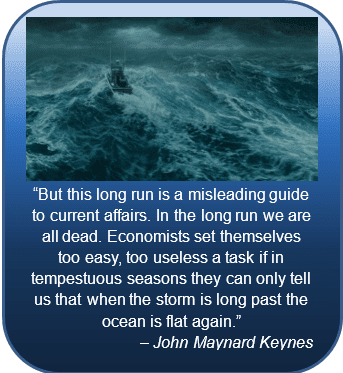 From Surviving to Thriving. There is still time for businesses to position themselves for success. The next normal will not be the new normal. Value Propositions should be the top priority for re-entry from COVID-19. Great Value Propositions provide targeted, memorable content. Selling value in person or remotely is a way for sales to connect with customer problems, support their goals, and focus the conversation. Sales skills should be centered on sales teams evolving good, specific Value Propositions in collaboration with buyers throughout the sales cycle. Other projects that provide information about product specifications and solution features are peripheral. “Keep everyone healthy, be there for your customers.”
From Surviving to Thriving. There is still time for businesses to position themselves for success. The next normal will not be the new normal. Value Propositions should be the top priority for re-entry from COVID-19. Great Value Propositions provide targeted, memorable content. Selling value in person or remotely is a way for sales to connect with customer problems, support their goals, and focus the conversation. Sales skills should be centered on sales teams evolving good, specific Value Propositions in collaboration with buyers throughout the sales cycle. Other projects that provide information about product specifications and solution features are peripheral. “Keep everyone healthy, be there for your customers.”

